23 Hearty Classic British Breakfasts to Kickstart Your Day
British breakfasts represent a culinary tradition steeped in comfort and hearty satisfaction.
Morning meals across the United Kingdom tell stories of regional pride and cultural heritage.
Families and food enthusiasts celebrate these morning dishes with remarkable enthusiasm.
Robust ingredients and time-honored cooking techniques define these beloved morning experiences.
Regional variations showcase incredible diversity within a single national breakfast landscape.
Each plate reflects generations of culinary wisdom passed through kitchens and family recipes.
The morning ritual transforms simple ingredients into memorable gastronomic experiences.
We invite you to savor our carefully curated list of 23 classic British breakfasts:
Classic British Breakfasts to Start the Day Right
Mornings in Britain begin with comforting breakfast plates. Savory, sweet, or somewhere in between, these classics are a must.
Finnan Haddie
Finnan haddie transforms simple haddock into a smoky Scottish seafood masterpiece originating in Findon, Scotland during the 18th century.
Scottish fishermen discovered an accidental preservation method when smoke-drying haddock near coastal fires, creating a distinctive flavor profile.
Cold smoking gives the fish its signature pale golden color and delicate texture.
Generations have enjoyed finnan haddie as a versatile breakfast protein, often poached in milk or grilled over high heat.
Traditional preparation involves slowly smoking haddock over wood fires using specific hardwoods.
Maritime communities along Scotland's northeastern coast popularized this unique fish preparation technique.
Fishermen initially developed the smoking process as a preservation method before refrigeration existed.
Ulster Fry
Ulster fry is Northern Ireland's iconic breakfast feast featuring crispy golden-fried meats, breads, and eggs that transform morning meals into a hearty culinary experience.
Sausages, streaky bacon, eggs, and tomatoes form its core ingredients, complemented by unique griddle-baked soda farls and potato bread.
Victorian-era breakfast trends sparked its initial popularity, with tourism in the 1960s solidifying its cultural significance.
Strict traditionalists argue passionately about authentic preparation methods, insisting ingredients must be fried exclusively in bacon fat.
Northern Irish families and restaurants serve this beloved dish as a symbol of regional identity.
Each component gets carefully fried to achieve perfect golden-brown crispiness.
Texture contrasts between crunchy exteriors and tender interiors define its gastronomic appeal.
Regional pride surrounds this breakfast staple that represents Northern Ireland's rich food heritage.
Potato Bread Farl
Potato bread farl is a golden-brown Irish griddle bread crafted from mashed potatoes, butter, flour, and salt.
Irish kitchens transform leftover mashed potatoes into these crispy, triangular bread pieces that originated in the early 20th century.
Bakers roll and cut the dough into distinct triangle shapes before cooking on a hot griddle or frying pan.
Farl refers to the distinctive triangular cutting method used in its preparation.
Crisp on the outside and soft inside, this bread becomes a key component of traditional Ulster Fry breakfast.
Regional Irish families often serve it warm alongside eggs, bacon, and other morning staples.
Irish breakfast traditions have embraced this simple yet satisfying bread for generations.
Potato bread farl represents a resourceful way to repurpose leftover ingredients into a delicious morning treat.
Soda Bread Farl
Soda bread farls are traditional Irish griddle breads made without yeast, featuring a distinctive quarter-circle shape born from dividing a flat dough circle.
Originating as quick snacks for unexpected guests, these simple breads combine flour, salt, baking soda, and buttermilk into a rustic staple of Ulster breakfast culture.
Farls serve as versatile companions to numerous dishes, from sweet spreads like homemade jam to savory ingredients including bacon and smoked salmon.
Families across Ireland prepare these breads using generations-old techniques passed down through home kitchens.
Ulster Fry breakfasts frequently showcase the bread as a central component alongside eggs and meats.
Historic cooking methods involved baking farls on griddles or open hearths, creating crisp exteriors and soft interiors.
Irish bakers traditionally rolled the dough into circular shapes before quartering each round into distinct triangular sections.
English Breakfast
Full English breakfast is a hearty morning feast celebrating Britain's culinary heritage with abundant protein and bold flavors.
Meat dominates the plate with crispy streaky bacon and savory pork sausages sizzling alongside perfectly cooked eggs.
Baked beans add a sweet-tangy counterpoint to the rich meats while grilled tomatoes contribute a bright acidic balance.
Fried bread provides a satisfying crunch that complements the softer textures of eggs and beans.
Mushrooms sometimes join the plate as an optional vegetable component.
Toast can substitute for fried bread in lighter versions.
Salt, pepper, and brown sauce frequently season this classic morning meal.
Crumpet
Crumpets are iconic British griddle cakes featuring signature honeycomb-like holes that trap melted butter and create an irresistible breakfast experience.
English bakers developed these unique round breads during the Victorian era using a specialized batter of flour, yeast, and milk that creates their distinctive spongy texture.
Traditionally cooked in metal rings on a hot griddle, crumpets transform from liquid batter into golden-brown discs with signature porous surfaces.
Victorian innovations dramatically improved their original flat pancake-like appearance, adding depth and complexity to the simple bread.
Home cooks typically serve crumpets warm with butter, jam, or honey for maximum enjoyment.
These small round breads originated in Wales and became popular across Britain as a beloved teatime staple.
Modern versions can be purchased ready-made in grocery stores or prepared fresh at home with minimal ingredients.
Crumpets remain a cherished breakfast and tea accompaniment throughout the United Kingdom.
Kedgeree
Kedgeree is a savory breakfast dish born from British colonial interactions in India, blending smoky fish, fluffy rice, and perfectly hard-boiled eggs with warm curry spices.
Victorian kitchens transformed the traditional Indian khichdi into this distinctive meal by removing lentils and adding smoked haddock.
British colonials discovered this fusion during the 19th-century Raj, creating a unique cross-cultural culinary experience.
Scottish cooks particularly favored using smoked haddock as their primary fish selection.
Ground fenugreek and coriander provide the signature spice profile that distinguishes kedgeree from its Indian predecessor.
Warm curry powder infuses the rice with complex flavors that complement the fish's smokiness.
Eggs add protein and richness to the dish, creating a balanced morning meal.
Breakfast tables across England still welcome this historical recipe as a comforting reminder of colonial cuisine.
Drop Scone
Drop scones are traditional Scottish griddle cakes characterized by their thick, fluffy texture and effortless preparation method of spooning batter directly onto a hot surface.
Scottish bakers originated these compact pancakes as a quick breakfast staple that quickly spread across British cuisine and even caught royal attention, with Queen Elizabeth famously preparing them for President Eisenhower during his 1959 Balmoral Castle visit.
These compact breakfast treats cook quickly and transform from simple morning fare to elegant desserts when topped with honey, fresh cream, or sweet seasonal fruits.
British households traditionally serve drop scones warm, maximizing their soft interior and slightly crisp exterior.
Home cooks create their batter using basic ingredients like flour, eggs, milk, and sugar.
Scottish recipes often include variations with buttermilk for extra richness.
Regional adaptations might incorporate berries or subtle spices for additional flavor complexity.
Drop scones remain a beloved comfort food across Scotland and Britain, bridging generations through their straightforward yet satisfying preparation.
Eggy Bread
Eggy bread transforms simple sandwich bread into a sweet, indulgent breakfast treat popular across Britain.
Soldiers historically enjoyed this affordable dish, which features crustless bread soaked in a rich mixture of eggs, milk, and sherry.
British home cooks prepare the bread by whisking eggs with icing sugar, milk, and optional sherry for extra flavor.
Butter sizzles in a pan as bread slices brown to golden perfection on both sides.
Cinnamon and additional sugar dust the top of each crispy slice for added sweetness.
Strawberry jam or blackberry compote often accompanies the finished dish as a final flourish.
Windsor's royal history inspired its alternate name, Poor Knights of Windsor, reflecting its humble origins.
Scottish Breakfast
Scottish breakfast packs a powerful protein punch with multiple meat varieties and classic regional ingredients showcasing Scotland's culinary traditions.
Scottish breakfast originated in mid-19th century Victorian kitchens as a status symbol for wealthy households.
Signature components include crispy bacon, link sausages, Lorne square sausage, black pudding, and rich haggis alongside baked beans, fried mushrooms, and tomatoes.
Tattie scones and perfectly fried eggs complete this substantial morning meal designed to fuel workers through challenging Highland landscapes.
Restaurants and cafes across Scotland serve this hearty breakfast in various styles and presentations.
Cold weather makes this meal especially appealing for maximum energy and warmth.
Generations of Scots have enjoyed this robust breakfast as a cultural and nutritional staple.
Restaurant menus and home kitchens continue celebrating this iconic morning feast.
Kippers
Kippers are cold-smoked herring halves with deep-rooted British culinary traditions first developed in 1843 by John Woodger as a preservation method.
British fishermen split whole herring, salt them thoroughly, and smoke them over woodchips to create a rich, concentrated flavor profile that transforms the fish into a nutrient-dense breakfast staple.
Salt prevents spoilage while smoking compresses and intensifies the herring's natural taste, making kippers an iconic morning dish served on buttered toast.
Victorian and Edwardian dining tables frequently featured these flavorful fish, with prestigious establishments like London's Savoy hotel including them on breakfast menus since 1889.
Traditionally consumed at breakfast, kippers also complement quiches, sauces, and omelets for versatile meal options.
Fishermen recommend barbecuing kippers to reduce their strong odor and enhance their palatability.
Potato Scone
Tattie scones are crispy potato-based flatbreads originating in Scotland, traditionally crafted from mashed potatoes, butter, and flour and cooked on a griddle until golden brown.
Scottish breakfast tables frequently showcase these savory bread alternatives alongside classic morning proteins like fried eggs, bacon, and black pudding.
Rural Scottish kitchens have long prepared these versatile scones as an economical way to use leftover mashed potatoes.
Home cooks typically roll the dough thin and cut it into triangular shapes before pan-frying to create a crisp exterior with a soft interior.
Restaurant menus across Scotland often include tattie scones as a standard breakfast component, reflecting their deep cultural significance.
While traditionally served hot with morning meals, these potato scones also pair wonderfully with afternoon tea or as a side dish.
Creative cooks sometimes serve them with jam or butter for added flavor.
Ackee And Saltfish
Ackee and saltfish represents Jamaica's culinary identity through a unique blend of West African fruit and salted fish.
Jamaicans enjoy this national dish as a hearty breakfast or appetizing meal featuring ackee, a potentially toxic fruit that must be carefully prepared when fully ripe.
Smooth reddish fruit transforms into bright yellow meat with distinctive black seeds after ripening, creating a dish visually similar to scrambled eggs.
Cod, mahi mahi, or mackerel serve as the traditional saltfish component, fried alongside boiled ackee, onions, hot chiles, and tomatoes.
Black pepper adds intense flavor to this complex preparation.
Eighteenth-century Caribbean history introduced ackee to Jamaica from West Africa.
Contrasting sweet and salty flavors define this iconic dish's remarkable taste profile.
Careful preparation ensures a safe and delicious dining experience.
Scottish Porridge
Scottish porridge is a hearty oat-based dish deeply rooted in Scotland's agricultural heritage, crafted from locally grown oats that thrive in the country's challenging climate.
Generations of Scottish farmers have relied on this nutritious breakfast, traditionally prepared by stirring oatmeal clockwise with a wooden spurtie to ward off evil spirits.
Packed with fiber, vitamins, and minerals, the porridge offers substantial energy for long workdays.
Scots historically consumed this dish while standing, reflecting their industrious lifestyle of simultaneously working and eating.
Water and a pinch of salt form the classic base, though some enjoy adding milk, dried fruits, or brown sugar for extra flavor.
Wooden bowls served as the traditional vessel for this simple yet nourishing meal.
Scottish porridge represents more than food; it embodies cultural resilience and connection to agricultural traditions.
Hot and filling, the dish continues to be a staple in Scottish households, bridging past and present through its enduring preparation methods.
Butteries
Rowies are rich Scottish breakfast rolls characterized by an exceptionally buttery composition and distinctive layered texture.
Originating in Aberdeen, these compact pastries developed as a hearty meal for fishermen and laborers needing portable, energy-dense food.
Scottish bakers crafted rowies using abundant butter and minimal yeast, creating a uniquely crisp exterior with soft, flaky inner layers.
Maritime workers appreciated these rolls for their high-fat content and compact size, which provided quick sustenance during long working hours.
Traditional preparation involves repeatedly folding butter into the dough, similar to croissant-making techniques.
Bakeries across northeastern Scotland continue producing these traditional rolls using time-honored methods.
Modern Scots enjoy rowies as a quick breakfast or snack, often served warm with butter or jam.
Egg Sandwich
Egg sandwiches anchor global breakfast menus with their simple yet satisfying combination of eggs nestled between bread slices.
Street vendors in East London pioneered this hearty meal during the early 19th century to feed hungry factory workers.
Typically, the sandwich includes eggs topped with melted cheese and optional protein like bacon or sausage.
Home cooks and restaurants worldwide prepare countless regional variations of this classic breakfast item.
Modern versions range from basic deli-style presentations to gourmet interpretations with specialty breads and premium ingredients.
Convenience and quick nutrition make egg sandwiches a popular morning choice for busy individuals.
Fast food chains and local cafes frequently feature multiple egg sandwich options on their breakfast menus.
Versatility and universal appeal have cemented this sandwich's status as a global morning staple.
Beans On Toast
Beans on toast represents a quintessential British comfort food that combines simplicity with satisfying flavor.
Affordable and quick to prepare, this popular dish features navy beans in a sweet tomato sauce ladled over crisp, golden toast.
Brits and international food enthusiasts enjoy this meal as a versatile option for breakfast, lunch, or dinner.
Protein-rich baked beans provide nutritional value and hearty taste to the basic bread base.
Budget-friendly ingredients make this dish accessible to students and households seeking an easy meal solution.
Creativity allows for personalized touches like melted cheese, black pepper, or a fried egg on top.
Home cooks can customize the recipe with different bread types or additional seasonings.
Convenience and taste have made beans on toast a beloved staple in many kitchens around the world.
Spaghetti On Toast
Spaghetti on toast represents a simple comfort meal popular in New Zealand, Australia, and the United Kingdom where canned spaghetti transforms ordinary bread into a quick, satisfying dish.
British and Antipodean households frequently serve this affordable meal as a speedy breakfast or lunch option.
Budget-conscious individuals appreciate its minimal preparation requirements and filling nature.
Warm toasted bread creates an ideal base for tangy canned spaghetti.
Basic preparation involves heating canned spaghetti and pouring it directly over crisp toast.
Optional toppings include grated cheese for added flavor and richness.
Kids and adults both enjoy this straightforward meal as a nostalgic, unpretentious dining experience.
Convenience and taste make spaghetti on toast a beloved staple in many working-class kitchens.
Devilled Kidneys
Devilled kidneys are a bold British dish featuring lamb kidneys quickly seared and bathed in a fiery, tangy sauce that combines sharp vinegar, zesty mustard, and pungent Worcestershire sauce.
Victorian breakfast tables frequently showcased this protein-rich plate, which now appears as a sophisticated light lunch or appetizer.
Cayenne pepper provides a spicy kick while occasional fruit jelly adds unexpected sweetness to the intense flavor profile.
Lamb kidneys deliver a robust, slightly gamey taste that experienced diners appreciate for its distinctive character.
Frying transforms the organ meat into a crisp, caramelized delicacy with a tender interior.
Professional cooks carefully clean and slice kidneys to minimize any strong mineral notes.
Restaurant menus occasionally feature this traditional preparation as a nostalgic nod to classic British cuisine.
Worcestershire sauce remains the secret ingredient that elevates this historic dish from simple to extraordinary.
Teisennau Tatws
Teisennau tatws are Welsh potato cakes bursting with rustic comfort and simple rural ingredients that transform humble potatoes into golden, crispy treats.
Welsh farmers traditionally crafted these hearty cakes as a resourceful way to use leftover mashed potatoes and basic pantry staples.
Boiled potatoes get mashed and mixed with flour, sugar, salt, butter, milk, and warming spices like cinnamon or mixed spice.
Bakers knead the ingredients into a stiff dough before shaping and frying the cakes until they develop a crispy, golden-brown exterior.
Home cooks often serve these versatile potato cakes as a breakfast side or afternoon snack with butter or jam.
These potato cakes represent a classic example of traditional Welsh home cooking that wastes nothing and satisfies hunger with minimal ingredients.
Potato Apple Bread
Potato apple bread emerges as a rustic Northern Irish delicacy blending hearty potatoes with sweet apples, originating from Armagh County's rich agricultural landscape.
Mashed potatoes form the dense base of this unique bread, creating a substantial texture that comforts and satisfies.
Sliced apples infuse natural sweetness and moisture into the dough, complementing the starchy potato foundation.
Local bakers carefully mix flour, sugar, and salt to balance the flavors and create a consistent mixture.
Butter adds richness and helps bind the ingredients together, ensuring a smooth preparation.
Regional farmers often use locally grown Armagh apples, known for their exceptional quality and flavor.
Traditional preparation involves hand-mixing and careful kneading to achieve the perfect consistency.
Home bakers and families continue to preserve this generations-old recipe, celebrating Northern Ireland's culinary heritage.
Pratie Oaten
Pratie oaten signifies traditional Northern Irish sustenance featuring mashed potato and oatmeal as fundamental ingredients for a hearty breakfast cake.
Originating in County Antrim, this rustic dish combines warm potatoes with rolled oats, creating a dense and satisfying morning meal.
Butter and salt enhance the cake's rich flavor profile, providing essential seasoning and depth.
Local Irish families traditionally prepared pratie oaten as an economical and filling breakfast option using simple, available ingredients.
Rural households typically mixed mashed potatoes and oats into a soft, cohesive dough before cooking the mixture on a griddle or skillet.
Generations of Irish families passed down this recipe as a practical way to use leftover potatoes and minimal pantry staples.
Families often served pratie oaten with butter or accompanied by additional savory toppings.
Nutritionally dense and warming, this potato-based cake represents rural Irish culinary ingenuity and resourcefulness.
Mealie Greachie
Mealie greachie represents a hearty Northern Irish peasant dish featuring toasted oatmeal with crispy bacon.
Irish bacon sizzles in a skillet until golden brown, creating a rich foundation for the recipe.
Rolled oats transform into a rustic meal when carefully toasted with browned onions and butter.
Cooks traditionally prepare this simple dish by first cooking bacon until crisp and setting it aside wrapped in foil.
Onions caramelize gently in the remaining bacon fat, adding deep flavor to the oats.
Butter helps develop a nutty, toasted essence as oats brown in the pan.
Regional farmers and laborers relied on this filling breakfast for sustained energy during long workdays.
Northern Ireland's agricultural heritage shines through this uncomplicated yet satisfying traditional meal.
When Did the Full English Become a Standard Morning Meal?
The Full English breakfast, a hearty combination of eggs, bacon, sausages, beans, mushrooms, tomatoes, and toast, became a staple morning meal in the late 19th and early 20th centuries.
Its rise is linked to the Victorian era’s emphasis on a substantial breakfast to fuel a working day. The meal grew in popularity through the 20th century, especially after World War II, as a symbol of British culinary tradition and hospitality.
Today, the Full English remains a beloved classic enjoyed in homes, cafés, and pubs across the UK.
What Are the Best Sauces and Condiments for a British Breakfast?
Sauces and condiments play an important role in enhancing the flavors of a British breakfast. Some favorites include:
These condiments round out the meal, balancing savory and sweet flavors for a satisfying breakfast experience.

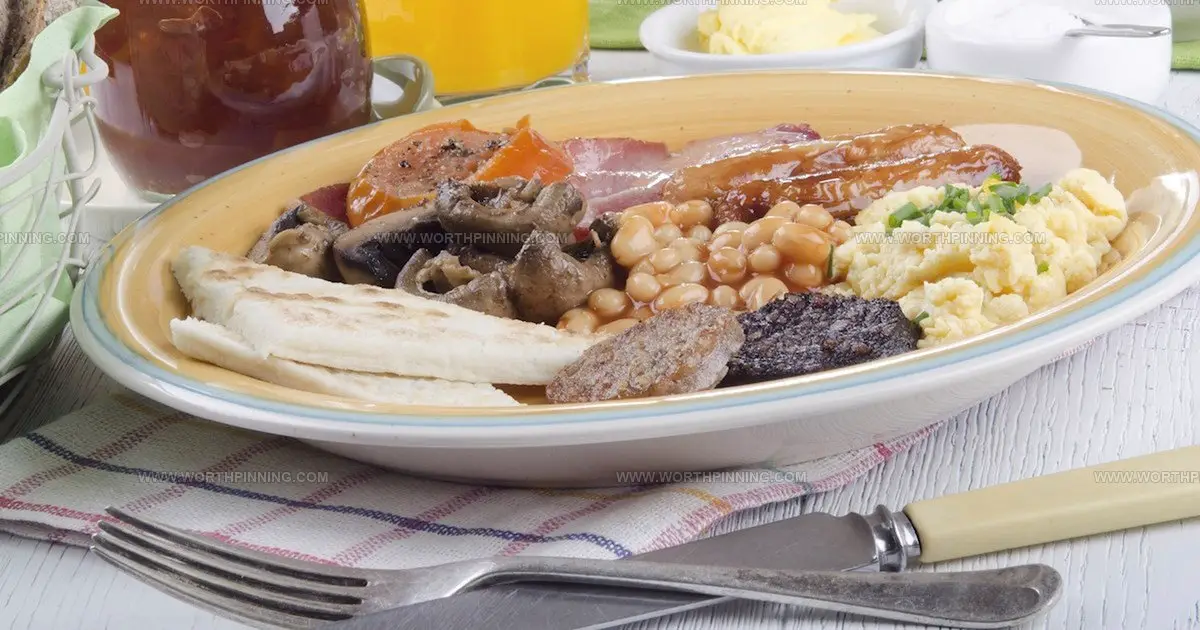
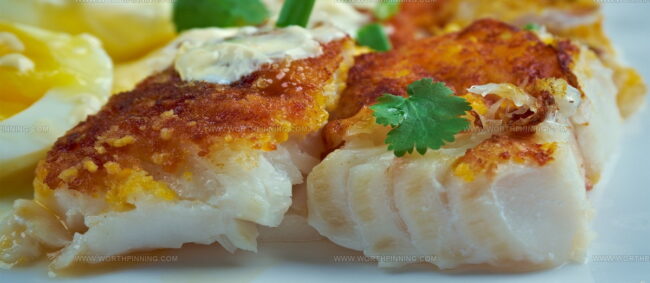
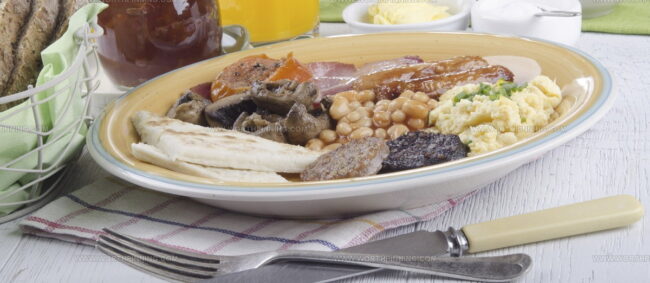
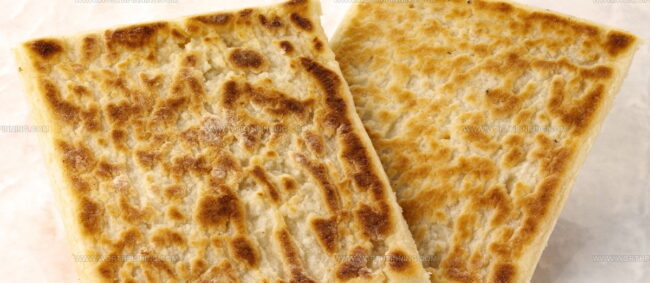





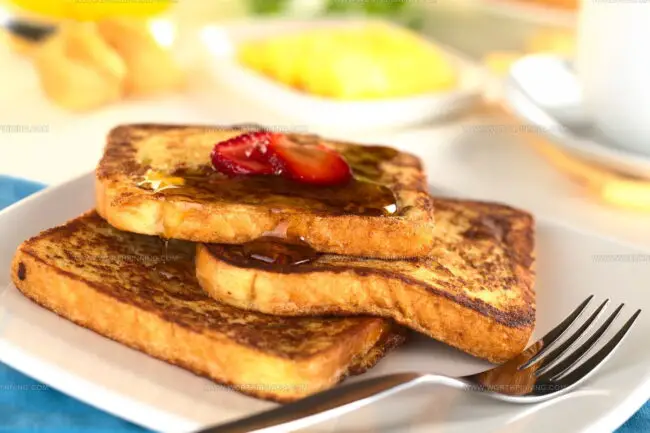
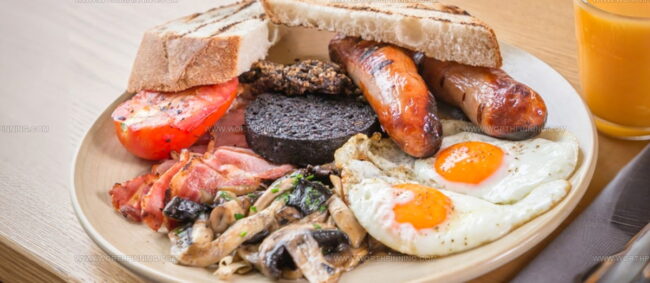
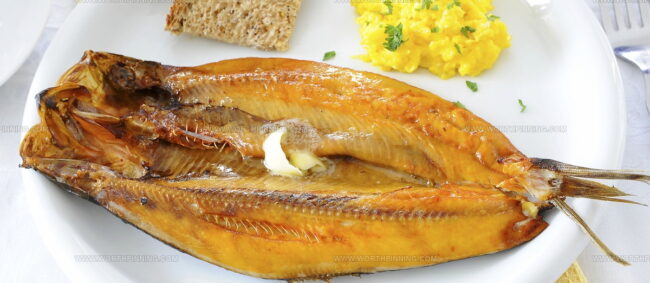
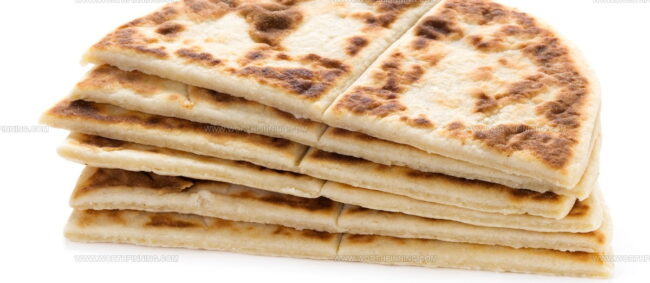

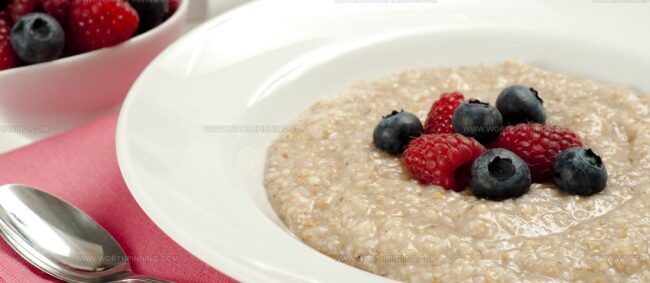
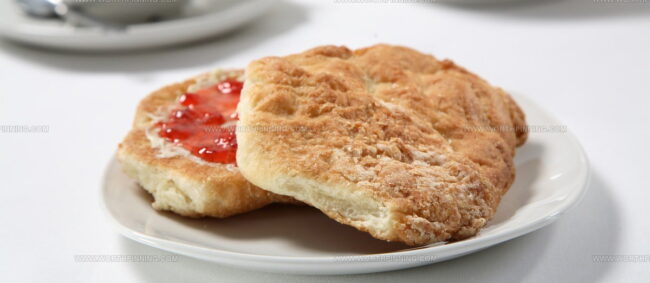

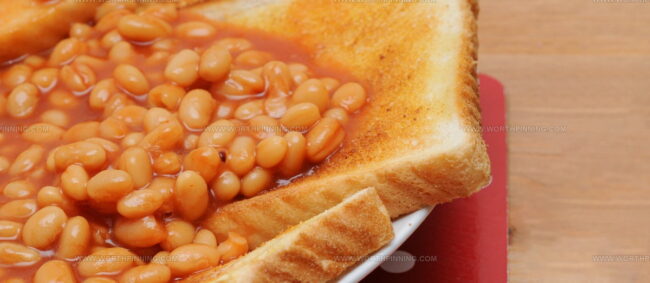

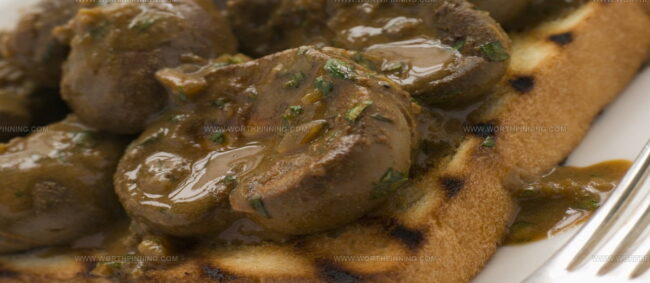
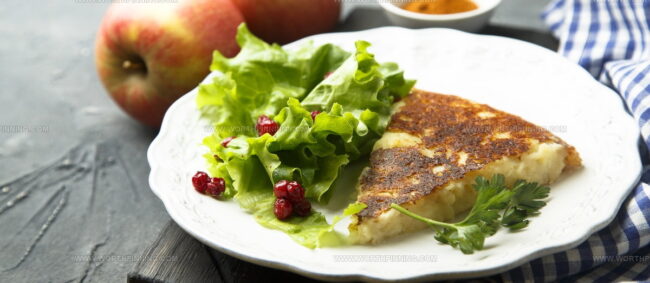

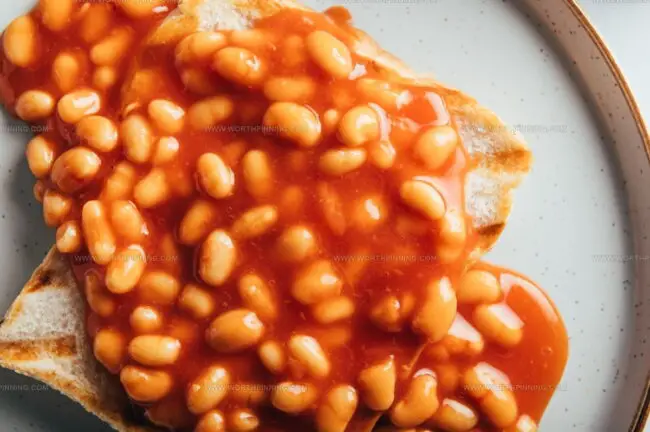
Ethan Miller
Founder & Lead Content Writer
Expertise
Education
Portland Community College
Culinary Institute of the Pacific
Ethan’s culinary journey began in his grandmother’s kitchen, where he first learned to play with flavors and ingredients. With formal training in culinary arts and a deep love for international cuisines, Ethan’s goal is to share the joy of cooking with others.
He believes food is all about creativity and bringing people together, one meal at a time. When he’s not experimenting with new dishes, he enjoys hiking in the Oregon wilderness and discovering fresh, local ingredients.